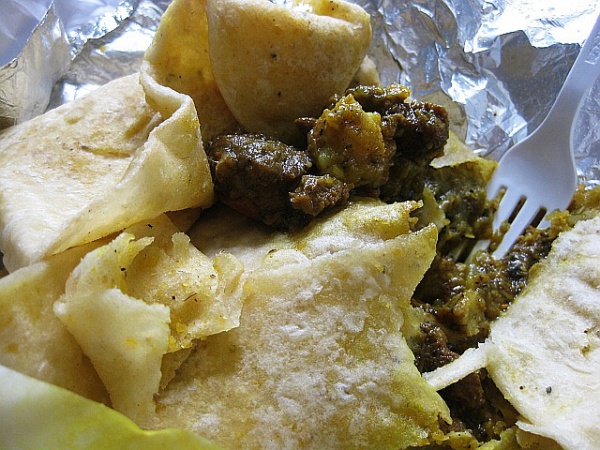Facts About Wrap roti
Roti, also known as wrap roti, is a cherished dish in the Caribbean. It typically features a delectable curry stew encased in either dhalpuri or paratha roti. The stew often comprises ingredients like potatoes and a variety of meats, such as chicken, duck, goat, beef, conch, or shrimp.
This dish is a staple in the West Indies, particularly in countries with substantial Indo-Caribbean communities, such as Trinidad and Tobago, Guyana, and Suriname. Roti was introduced to the Caribbean by South Asian indentured laborers and has since become an integral part of the local cuisine in regions like Trinidad and Tobago, Suriname, Guyana, Grenada, Jamaica, and even South Africa. Traditionally, roti is enjoyed with curries and stews, and it is customary to tear the roti by hand to scoop up the rich sauce and meat.
The convenience of roti inspired the creation of the "roti wrap" where the roti is folded around a savory filling, making it a portable meal. This innovation originated in Southern Trinidad in the mid-1940s and quickly gained popularity. The wrap typically includes fillings such as chicken, conch, goat, beef, or shrimp, along with vegetables and local condiments like pepper sauce and mango chutney.
The roti wrap's popularity has spread throughout the Caribbean, and roti shops have become a common sight in Trinidad and Tobago. As Caribbean communities migrated to North American cities like Toronto, New York, and Montreal, they brought the wrapped version of roti with them, making it a well-known dish in these areas. In restaurants and commercial establishments, the flatbread itself is often referred to as a "roti skin" or "roti shell."
Various types of roti are enjoyed across the West Indies, with the basic ingredients being wheat flour, baking powder, salt, and water. Some versions might also include butter or dal. Roti holds a special place in the local diet in countries such as Trinidad and Tobago, Guyana, and Suriname.
